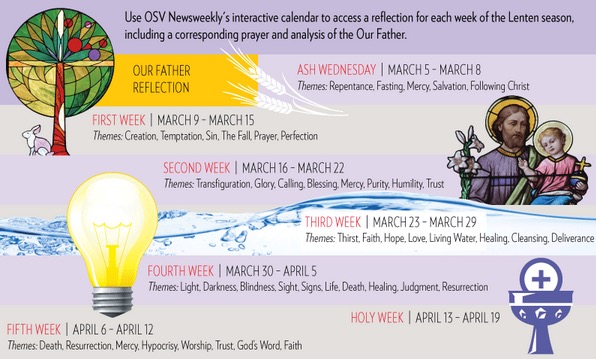A few years ago I gave a Theology on Tap talk about the Communion of Saints. Afterward, an evangelical Protestant attending the talk asked, “But isn’t that just another form…
A few years ago I gave a Theology on Tap talk about the Communion of Saints. Afterward, an evangelical Protestant attending the talk asked, “But isn’t that just another form of necromancy?”
“No,” I replied, “because necromancy is an attempt to manipulate the spirit world in order to find out about the future.” Praying to a saint, I explained, isn’t a manipulation of the dead, nor is it aimed at foretelling the future, but rather it is about having a real relationship with our brothers and sisters in Christ who are now in the presence of God.
“Then why even bother to pray to saints?” he asked. “Why not just pray to God directly?” “If I were to ask you to pray for me,” I said, “would you do it?” “Yes, I would,” he admitted. As a former evangelical myself, I know how committed many Protestants are to praying for one another. After all, the apostle James exhorted his readers to “pray for one another, that you may be healed. The fervent prayer of a righteous person is very powerful” (Jas 5:16).
That brief exchange pointed to some of the key, underlying issues when discussing the Catholic approach to saints with Protestants — usually, evangelicals or fundamentalists who dismiss the Communion of Saints. These issues are summarized well by Father Josef Neuner, S.J., and Father Heinrich Roos, S.J., in their book “The Teaching of the Catholic Church” (Alba House, 1967). It is a “historical fact,” they wrote, “that the loss of sense of ecclesiality, the dissolution as it were of the Communion of Saints, and the preaching of a purely interior religion have always led to a protest against the Church’s veneration of the saints.”
In other words, those who hold an anemic understanding of the nature of the Church will end up misunderstanding the devotion and veneration shown to the saints by Catholics and Eastern Orthodox (as well as some Anglicans and other Protestants). The Church, rightly understood, is a Communion of Saints — not just here on earth, but also in heaven and purgatory. The Church is not only earthly, but also divine, just as Jesus is fully human and fully God. And while those who make up the Body of Christ, the Church, are individuals, they are also members (see 1 Cor 12:27), having a relationship with the Head of the Church, and also with one another. The saints are, wrote Father Hans Urs von Balthasar, like “open treasure-houses accessible to all, like flowing fountains at which everyone can drink. Nothing in the Communion of Saints is private, although everything is personal.”
Put another way, the saints in heaven are just as real and immediate to us as those sitting beside us at Mass. In fact, they are even closer, as they are able to relate to us perfectly, being holy and complete, freed from sin and the distractions of this world. They are alive — truly alive, filled with divine life and enjoying perfect union with God. They are, in the words of the Letter to the Hebrews, “a cloud of witnesses” (12:1) surrounding us, helping us and encouraging us.
Many Protestants reject outward (and even inward) expressions of devotion to saints because they fear it smacks of idolatry. But the Church has always been very mindful of this concern. For example, the Second Council of Nicaea, in 787, carefully distinguished between “respectful veneration” shown to saints and “true adoration” which, “according to our faith, is due to God alone.” It also noted that veneration shown to an image (or statue) is veneration given to “the person represented by it.” The author of Hebrews wrote of running the race — that is, living the Christian life — by looking to “Jesus, the leader and perfecter of faith” (12:2). Likewise, the Second Vatican Council noted that by “celebrating the passage of these saints from earth to heaven the Church proclaims the paschal mystery” and “proposes them to the faithful as examples drawing all to the Father through Christ” (Sacrosanctum Concilium, No. 104). United in Christ, we are siblings by grace, the life of God (see Catechism of the Catholic Church, Nos. 1997-98). Yes, worship is due to God alone. But admiring, respecting and loving those who are true disciples of Christ is not worship. Rather, it is befitting among brothers and sisters, which we are in Jesus, by the power of the Holy Spirit, according to the will of the Father.
Carl E. Olson is the editor of Ignatius Insight (www.ignatiusinsight.com). He and his family live in Eugene, Ore.

